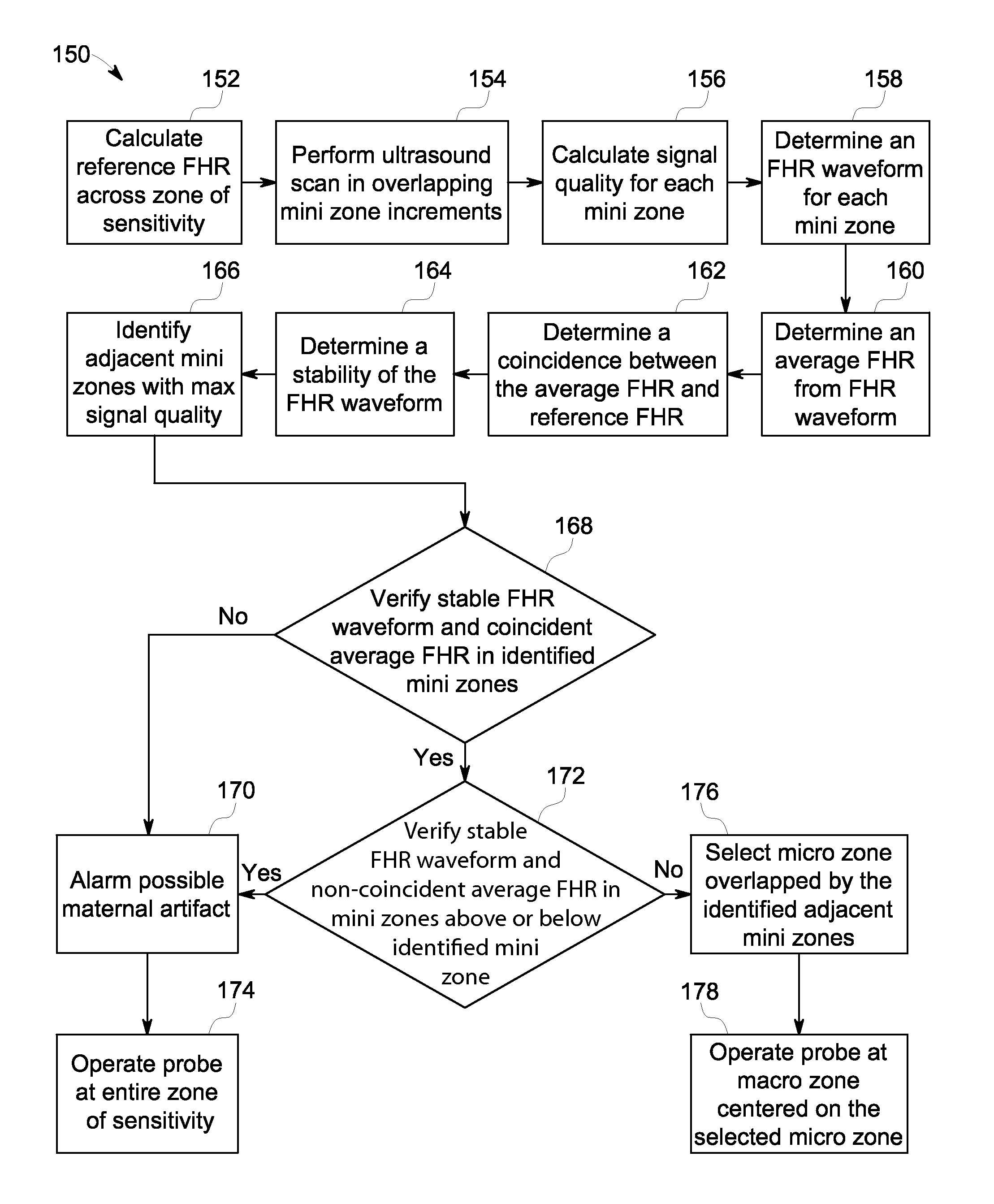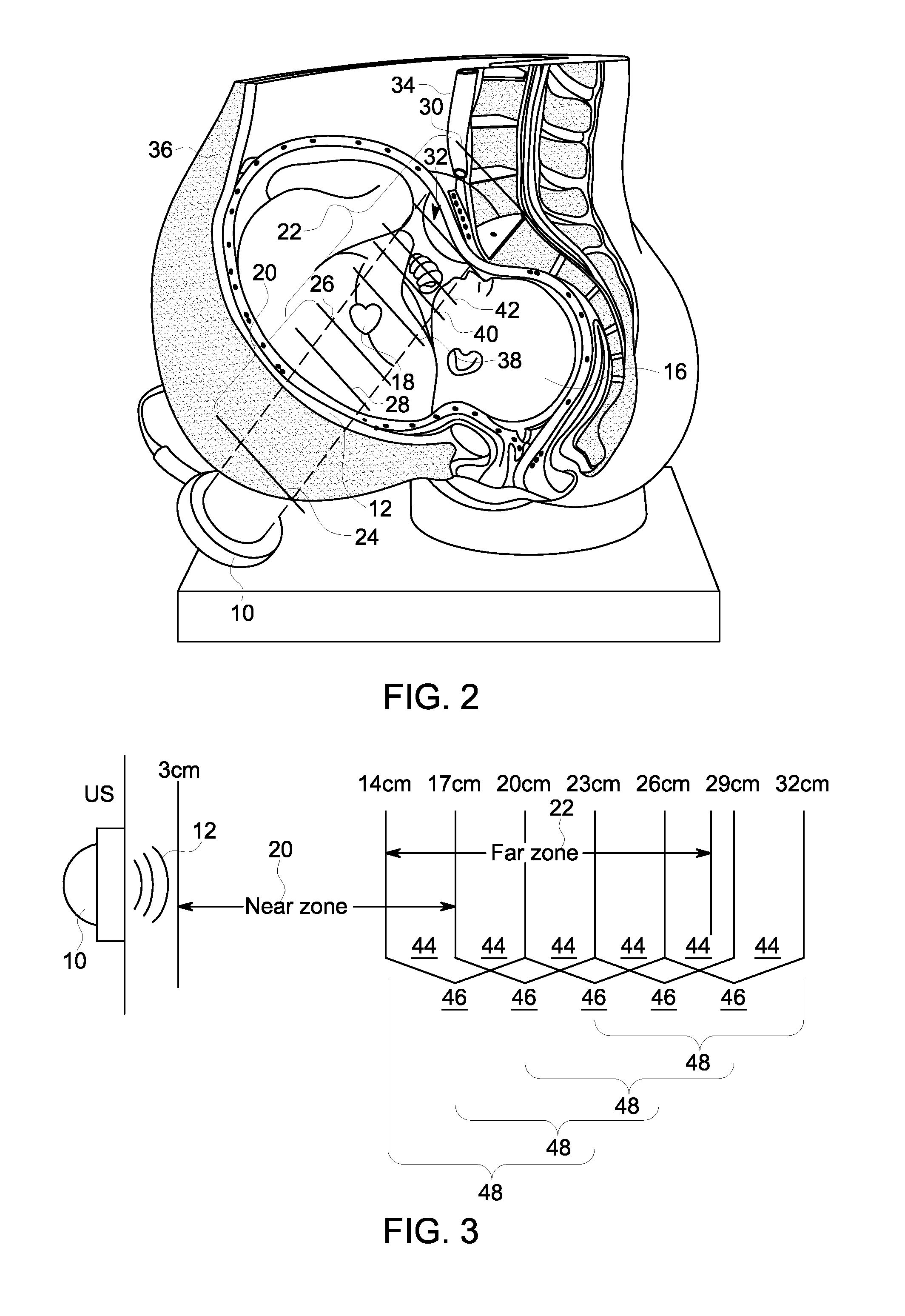Method and device for fetal heart rate monitoring with maternal contribution detection
a heart rate monitor and fetal heart rate technology, applied in the field of fetal monitoring, can solve the problems of limited ultrasound penetration, difficult application of doppler ultrasound to detect fetal heart rate (fhr) in obese patients, and the risk of competing physiological signals of mothers, and achieve the effect of maximizing signal quality
- Summary
- Abstract
- Description
- Claims
- Application Information
AI Technical Summary
Benefits of technology
Problems solved by technology
Method used
Image
Examples
Embodiment Construction
[0016]FIG. 1 diagrammatically depicts the operation of an embodiment of an ultrasound transducer 10 to project an ultrasound beam 12 into the body of a maternal patient 14 and a fetus 16. The ultrasound beam 12 is particularly directed at the heart 18 of the fetus 16. FIG. 1 exemplarily depicts a first ultrasound sensitivity zone 20 and a second ultrasound sensitivity zone 22. In the exemplary embodiment depicted in FIG. 1, the first ultrasound sensitivity zone 20 is a near zone and the second ultrasound sensitivity zone 22 is a far zone. It is to be understood that these ultrasound sensitivity zones are merely exemplary and such zones may exemplarily be defined in other manners than that described herein, including a single ultrasound sensitivity zone.
[0017]In the exemplary embodiment depicted in FIG. 1, the near zone 20 extends across a depth range between 3 centimeters indicated at 24 to 17 centimeters indicated at 26. In an exemplary embodiment the far zone may extend across a d...
PUM
 Login to View More
Login to View More Abstract
Description
Claims
Application Information
 Login to View More
Login to View More - R&D
- Intellectual Property
- Life Sciences
- Materials
- Tech Scout
- Unparalleled Data Quality
- Higher Quality Content
- 60% Fewer Hallucinations
Browse by: Latest US Patents, China's latest patents, Technical Efficacy Thesaurus, Application Domain, Technology Topic, Popular Technical Reports.
© 2025 PatSnap. All rights reserved.Legal|Privacy policy|Modern Slavery Act Transparency Statement|Sitemap|About US| Contact US: help@patsnap.com



